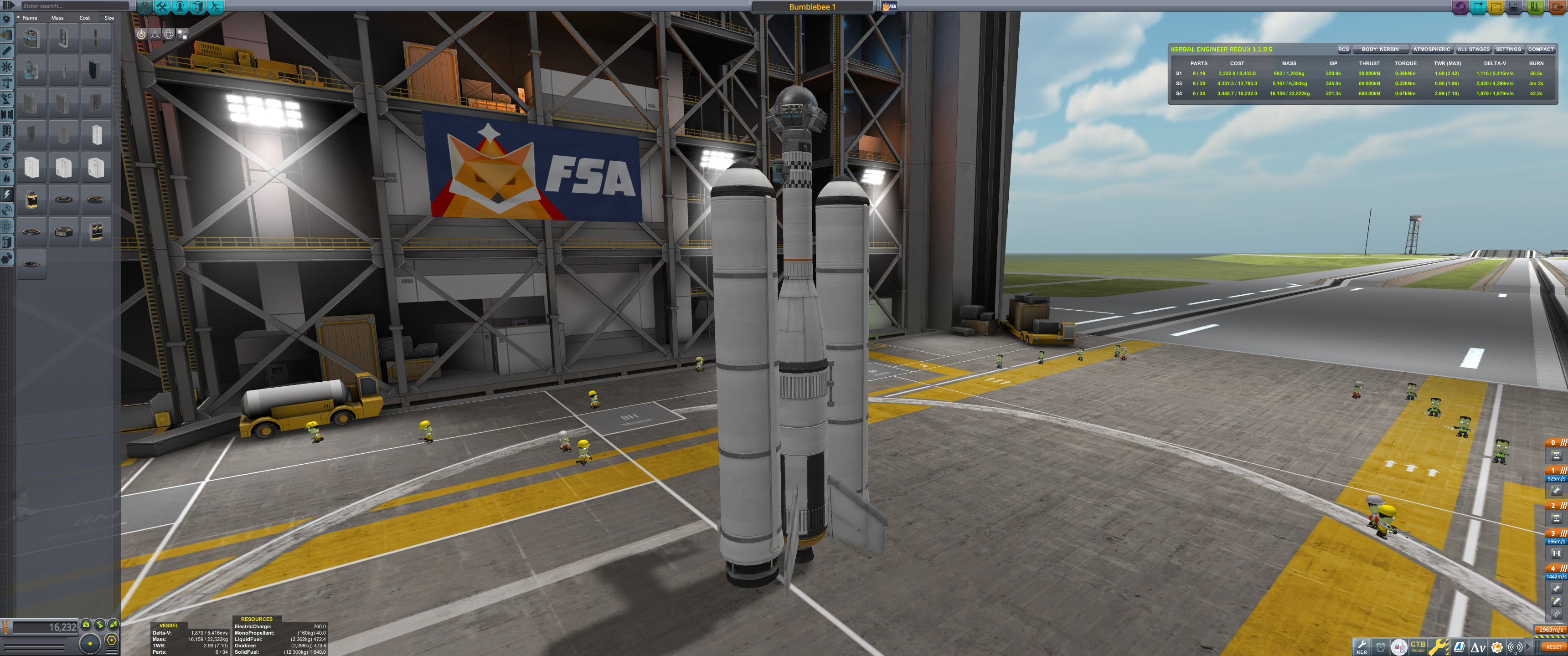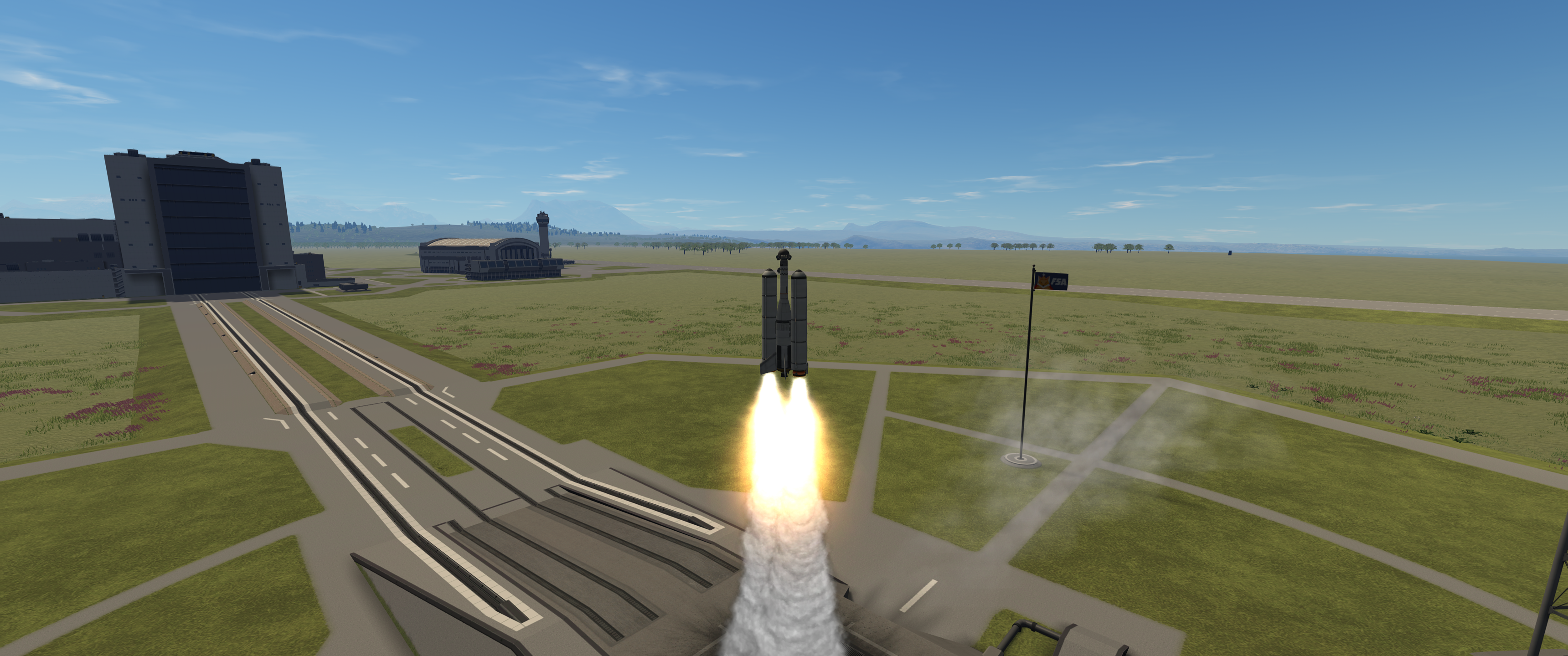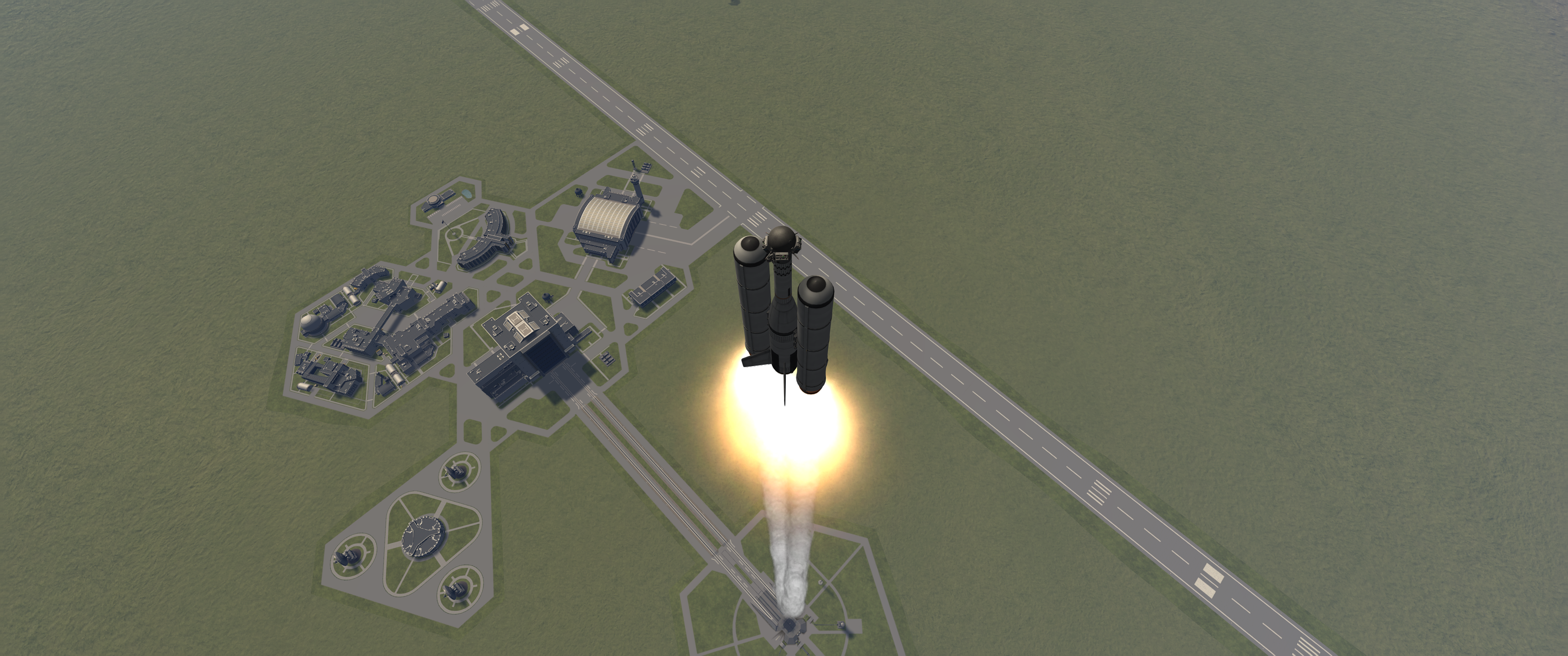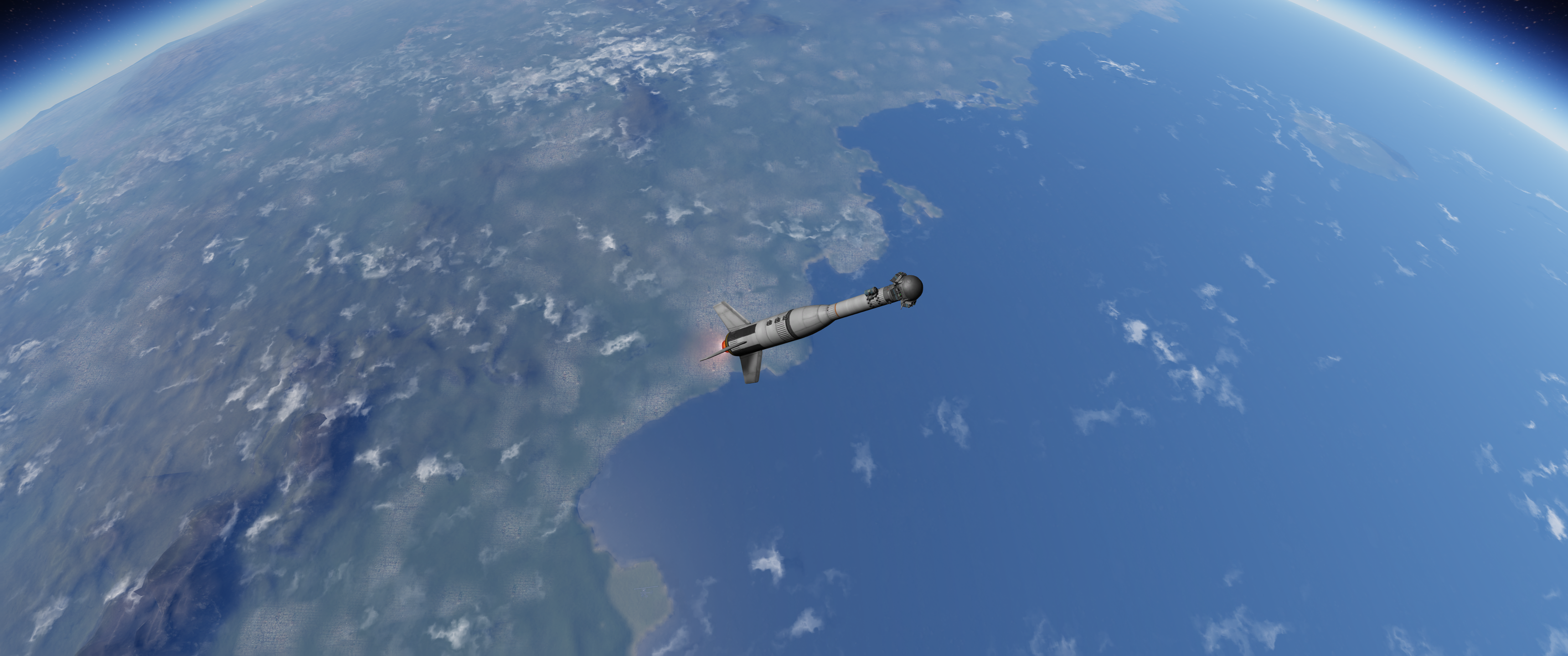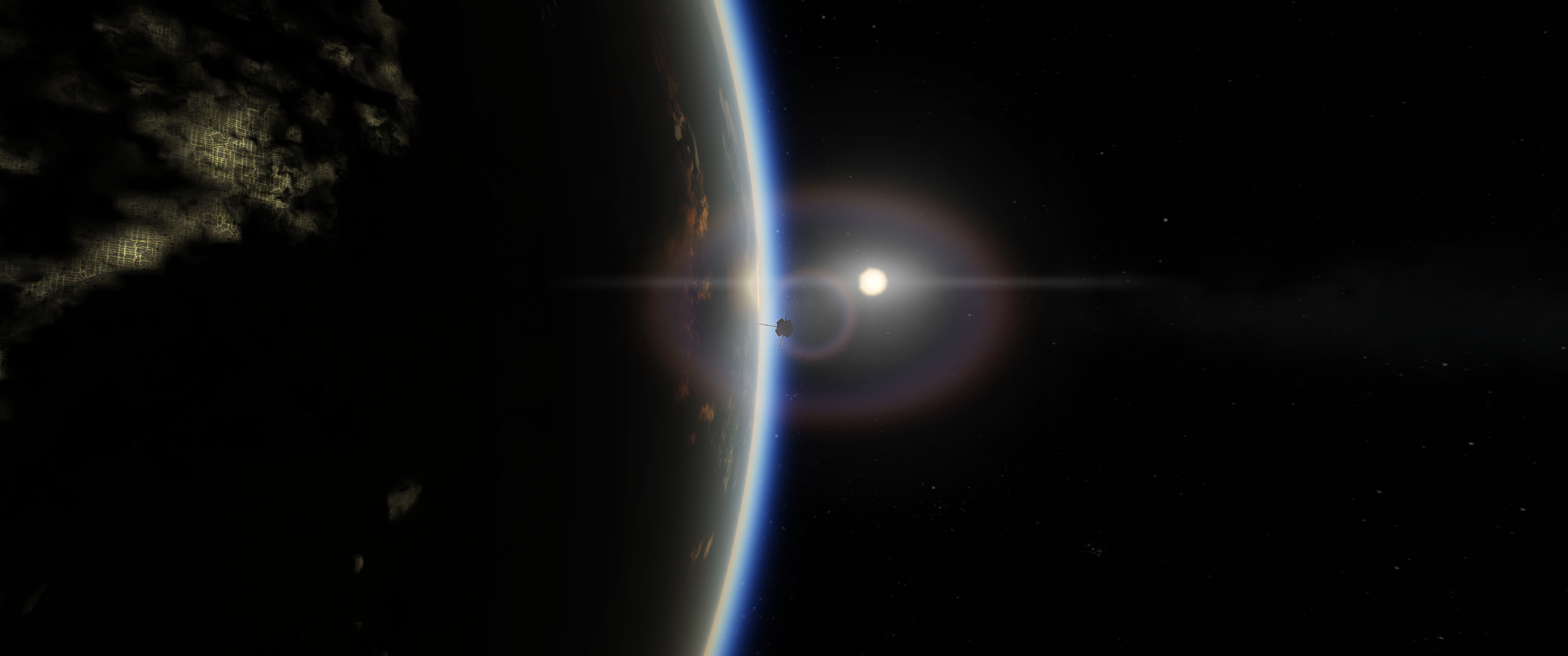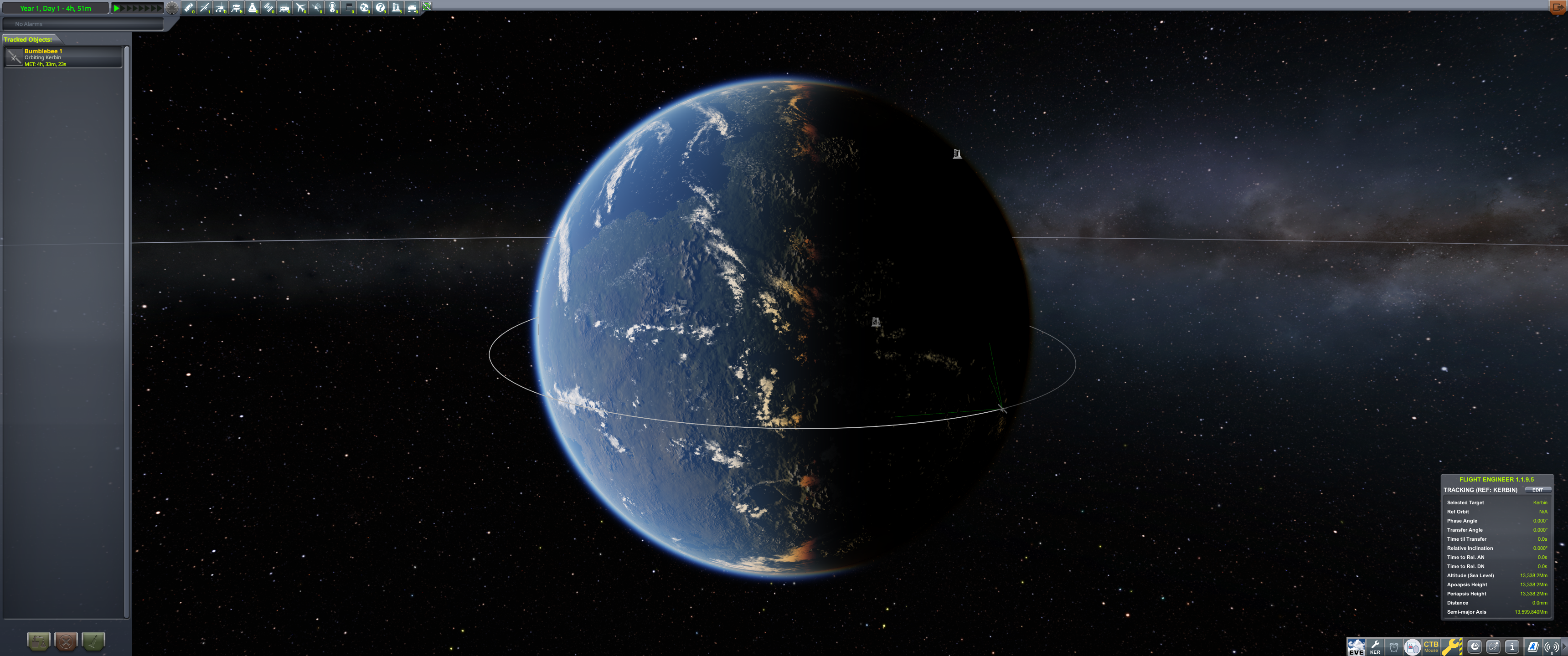Beep Beep Beep
Putting a satellite into orbit in Kerbal Space Program

Inspired by the process of writing about the development of Kerbal Space Program and the unexpected release of the pre-alpha of Kitten Space Agency, I have felt inspired and decided to revive my space program endeavours. For this, I have re-installed Kerbal Space Program and some essential mods one needs these days to make it look and play nice. KSA 2 might have been a disaster, but the community has picked up the slack in providing some excellent mods to keep its look recent and tide us over until KSA is in a state to allow some actual gameplay. So, here we go: Fab Space Agency has been reborn.
I spent most of this very rainy Sunday yesterday here in Düsseldorf setting up and designing the first mission: To get an initial satellite, based on the real thing, into orbit. After some trial and error, I managed to hack together a launch vehicle that works. Within some margin of error. 😆 It’s also much, much smaller than that original Russian rocket was. 🤨
The launch vehicle has plenty of power to get the job done, but it is a bit wobbly. Due to a design quirk of the rocket, you can only decouple the solid fuel boosters once they have burned out. Otherwise, the second stage won’t get away fast enough to clear them and will collide with the boosters, damaging or destroying the rocket. You also can’t tilt the launch vehicle too much before the booster decoupling, either. I learned all of this in a very painful way during initial testing. All of this means that the initial climb will be a bit steep and it took me a few tries to get into a stable orbit on the initial tests because of this. I finally got the hang of it, however, and was then ready to launch with the payload.
The second stage made it into an initial orbit and I decoupled it after it ran out of oxidiser and flamed out.1 I then flew around half of Kerbin and used the third stage, which had plenty of Δv2 left, to circularise the orbit at a height of around 90 km. This left me with a lot of unneeded fuel, but as I had reached my mission target parameters, I was ready to decouple the third stage from the payload. But before I did that, I used its APU to burn some monopropellant to charge the batteries on the satellite. Since they are powered by fuel cells and will run out eventually, I wanted to extend the satellite’s lifetime as long as possible. After this, I decoupled and watched the third stage float away from my satellite.
Finally, I extended the satellite’s antennas to complete the mission. Bumblebee 1 had reached a stable orbit around Kerbin.
It took some trial and error to get back into Kerbal Space Program after not having played it for a long time. First, I waited for KSP 2, and then bounced off that fairly quickly after some initial testing, and now I have to relearn everything in the original KSP. But hey, that’s part of the fun! I am quite happy with how this first mission went.
I’m actually looking at duplicating my original Bumblebee mission from KSP 2 next, with what will become Bumblebee 2. Who knows, maybe I’ll finally be able to accomplish a Grand Tour in KSP at some point. An actual Grand Tour is a single mission where you land a Kerbal on every landable body in the Kerbol system with one ship, which I think is out of the question for now for me. But I would be quite happy to accomplish landing a Kerbal on every body with different ships during a large series of missions. I also want to put a space station in orbit at some point.
Let’s see how long this can captivate me before I get bored or distracted again. For now, we have a nice satellite in orbit and can imagine that it emits a very similar signal to its historic predecessor:
-
In space, liquid fuel rocket engines can’t function without oxidiser, because there is no oxygen for the flame to consume outside of the atmosphere. ↩︎
-
Delta-v is a measure of the total manoeuvres a spacecraft can execute. It is measured in change of velocity, usually metres per second, and represents the spacecraft’s available thrust, from which its mass (including that of the fuel needed to generate the thrust) is subtracted. Delta-v is used to judge, for example, how much of its thrust budget a spacecraft needs to reach orbit and how much manoeuvrability it has left for other things after doing so. Therefore, delta-v can be used to calculate how powerful an engine has to be in relation to the fuel and payload aboard to get a craft into Earth orbit and then, for example, on a trajectory for the Moon, for a landing, subsequent take-off and then the return trip back to Earth. This can be calculated for all target objects in the solar system. Delta-v values change in atmosphere as opposed to space, as the atmospheric drag is another force that has to be counteracted and thus also be subtracted from the spacecraft’s potential. ↩︎


